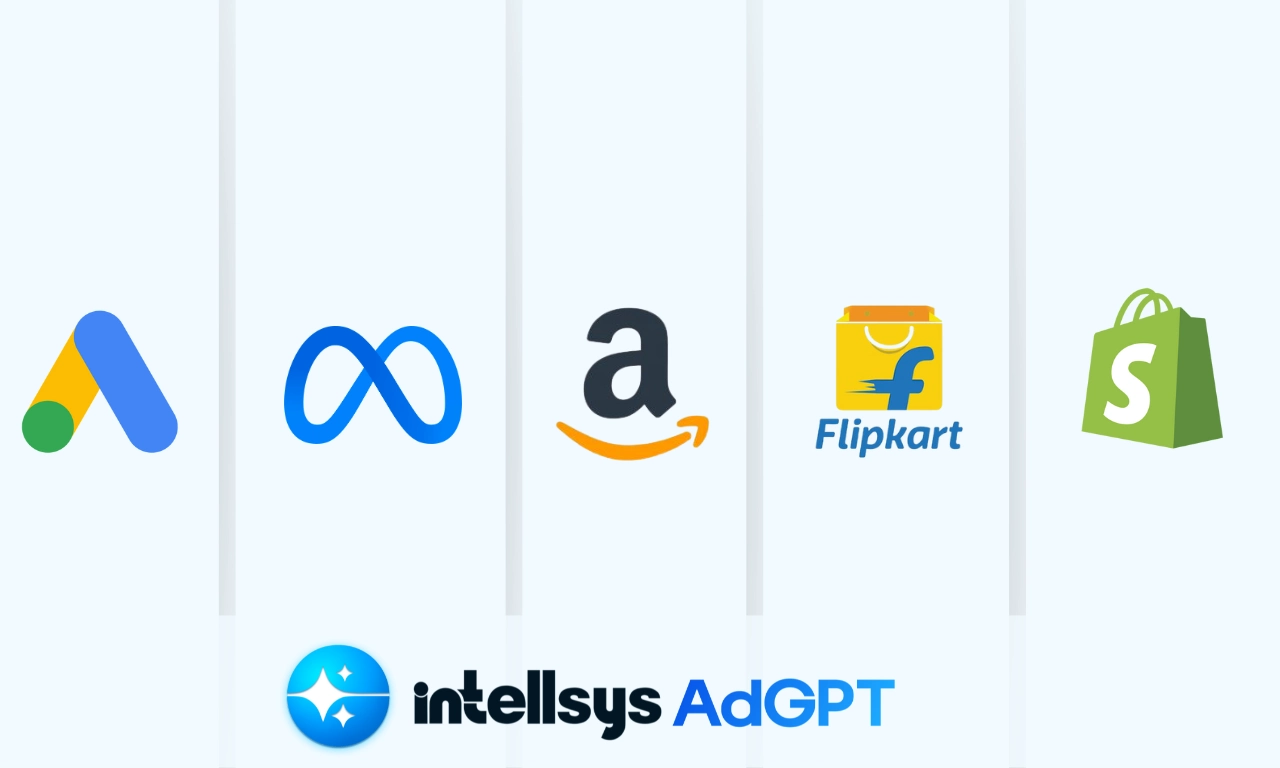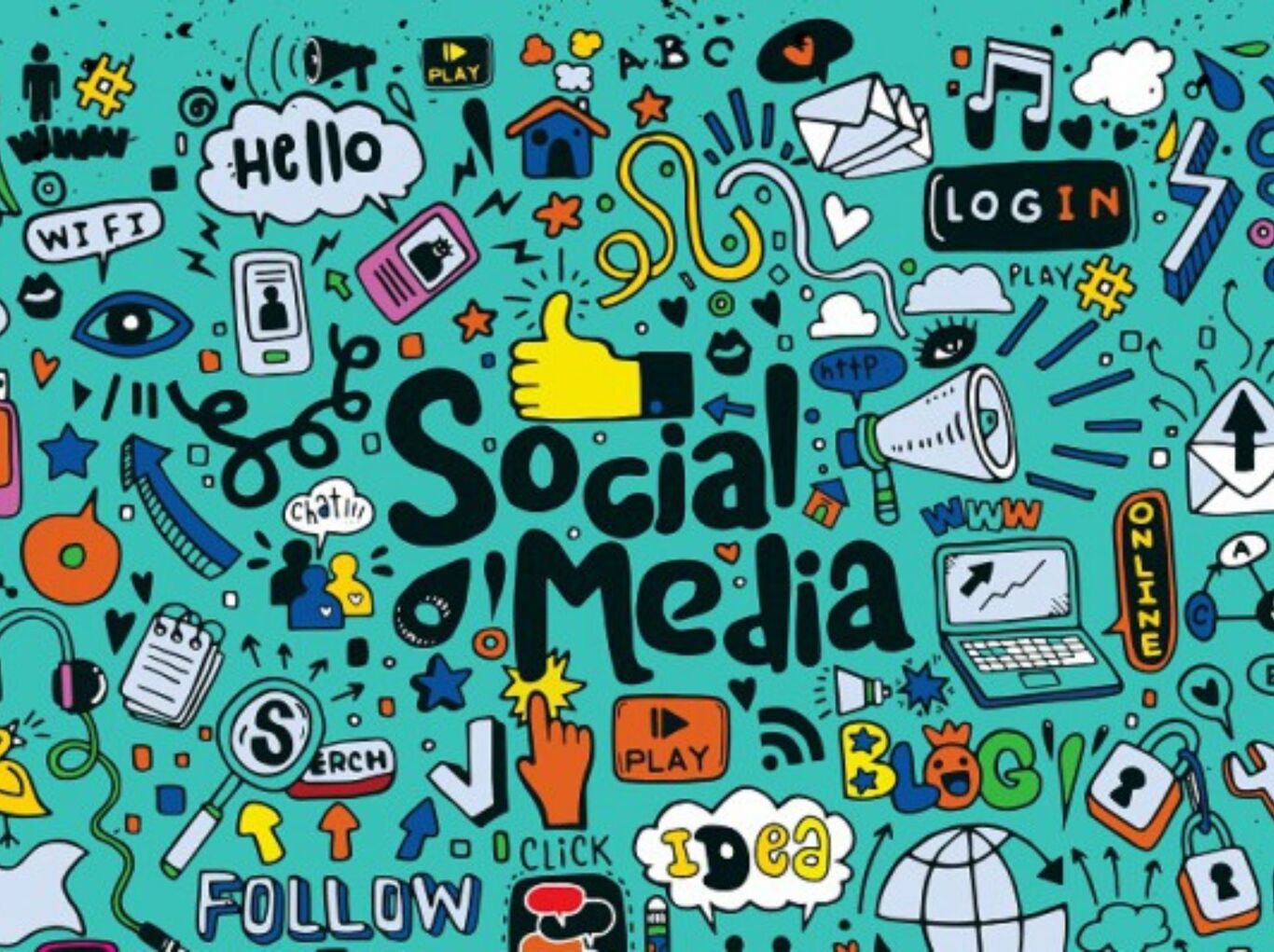The Future of Advertising Intelligence: Why Intellsys AdGPT Is the System Behind Tomorrow's Marketing Teams

The marketing landscape in 2026 will barely resemble 2025.
By next year, digital advertising will account for 80% of all marketing spend, driven by AI-powered automation that makes decisions faster than humans can process data. Autonomous AI agents will manage entire campaigns from strategy to execution with minimal human intervention. Traditional marketing teams will shrink; decision-making cycles will compress from days to minutes; and the competitive edge will belong entirely to organizations equipped with prescriptive intelligence systems.
This isn't speculation. This is consensus. Every major platform Google, Meta, Amazon, ByteDance is building autonomous ad systems for 2026. McKinsey predicts that 30% of work hours in marketing will be automated by 2030, with AI handling routine tasks while humans focus on strategy. And Forrester's latest research warns that enterprises dereferring AI investments are making a strategic error the gap between winners and losers will widen dramatically once autonomous systems reach maturity.
Intellsys AdGPT is not preparing for tomorrow's marketing landscape. It's already architected for it.
Three Forces Reshaping Advertising in 2026
1. Autonomous AI Agents Are Moving From Concept to Production
For years, marketing automation meant "workflows" and "rules engines" rigid systems that required constant human tuning. That era is ending.
By 2026, autonomous AI agents will independently manage entire campaign loops: goal-setting, planning, execution, monitoring, and real-time optimization with humans reviewing results, not managing operations. Meta is already testing auto-generated video ads. ByteDance has launched virtual influencers. Google is integrating ads into AI mode responses.
These aren't experimental pilots. They're production systems scaling to billions of impressions. The question for marketing teams isn't whether autonomous ads are coming it's whether they'll lead or lag when they arrive.
2. Data Fragmentation Is Ending; Unified Intelligence Is Beginning
The modern marketing stack is splintered across 200+ platforms. Google Ads, Meta, Amazon, The Trade Desk, Shopify, CRM, CDP, DWH each operates independently, generating conflicting metrics and delayed insights.
But integration is accelerating. APIs are standardizing. Real-time data pipelines are commodity infrastructure. By 2026, organizations with unified, cross-channel data will make decisions 3x faster than those stuck in silos.
Intellsys AdGPT already operates on integrated data. It queries 200+ platforms in real-time, synthesizes metrics into one truth, and prescribes action all in seconds.
3. Decision Velocity Has Become the Existential Competitive Edge
Ad platform algorithms now update hourly. Customer behavior shifts daily. Market windows close in minutes. In this environment, organizations that decide in 2-3 days are competing with organizations that decide in 15 minutes.
The speed advantage is no longer marginal. It's compounding. Across a quarter, 3x more decisions. Across a year, 3x more learning. Across three years, competitive moats are nearly impossible to overcome.
The Inflection Point: Why 2026 Matters More Than You Think
According to Forrester Research, the era of AI hype is ending. The AI reckoning of 2026 marks the moment when enterprises stop asking "Should we invest in AI?" and start demanding "What tangible ROI does this AI deliver?".
This reckoning has three implications:
1. Generic AI Will Stall; Prescriptive AI Will Accelerate
Organizations that invested in ChatGPT-based workflows will discover that general-purpose AI can ideate and generate copy but it cannot make operational marketing decisions or execute at scale. Adoption will plateau. ROI will disappoint.
Organizations with prescriptive intelligence systems trained specifically on advertising dynamics, integrated with real-time data, and architected to deliver ranked recommendations will pull ahead.
2. AI Spend Consolidation Will Favor Proven Performers
Forrester predicts that enterprises will defer 25% of planned AI spend into 2027, concentrating budgets on solutions with proven ROI instead of speculative pilots. This creates a "flight to quality" CMOs will consolidate on systems that consistently deliver measurable results.
Systems like Intellsys AdGPT, with clear outcome metrics (CAC improvement, ROAS uplift, decision cycle compression), will attract concentrated investment. Experimental tools will be cut.
3. Team Structure Will Reorganize Around AI Intelligence
By 2026, marketing teams won't have separate "analytics" and "execution" departments. Instead, they'll organize around intelligence hubs cross-functional pods with data scientists, strategists, and execution specialists all aligned on one prescriptive intelligence system.
The role of the traditional "analyst" disappears. The role of the "AI intelligence partner" emerges someone who interprets recommendations, tests assumptions, and drives strategy.
What Happens to Marketing Teams That Don't Prepare: Three Failure Modes
Failure Mode 1: Execution Lag
Teams still using dashboard-based analytics in 2026 will be competing against teams making decisions 20-30x faster. A decision that takes your team 2-3 days takes an AdGPT-powered competitor 15 minutes. Across five major decisions per quarter, that's a 200-300 hour difference in decision latency. By month two, the faster team has tested 5x more variations and learned exponentially more.
Failure Mode 2: Talent Exodus
High-performing marketers especially those who've experienced AI-powered environments will not stay in organizations still using manual workflows and slow dashboards. They'll migrate to competitors equipped with prescriptive intelligence. The brain drain accelerates, and those left behind lack the context to reverse course.
Failure Mode 3: Budget Erosion
As autonomous AI agents drive better performance for better-equipped competitors, media platforms will consolidate spend toward high-performers. Budget costs rise (CPM inflation). Worse performers receive less platform optimization (algorithmic penalty). A downward spiral begins that's hard to reverse.
The System Behind Tomorrow's Marketing Teams: Intellsys AdGPT
While the industry is still debating whether to adopt AI, Intellsys AdGPT has already solved the core problem: How do we turn data abundance into decision velocity?
The answer is prescriptive intelligence systems that don't just inform decisions; they prescribe them, with step-by-step playbooks, outcome projections, and integrated execution.
Three Capabilities That Separate AdGPT From Yesterday's Tools
Capability 1: Real-Time Integration Across the Full Ad Stack
AdGPT connects to 200+ platforms simultaneously. Google Ads, Meta, Amazon, The Trade Desk, Shopify, CRMs, CDPs, data warehouses all unified in real-time, all queryable in natural language.
This isn't data warehousing (which is slow) or dashboard integration (which is fragile). This is operational integration live queries against live data, updated hourly, returning results in seconds.
By 2026, organizations without this level of integration will be operating blind while competitors see everything in real-time.
Capability 2: Prescriptive Recommendations Tied to Quantified Outcomes
AdGPT doesn't answer "What happened?" It answers "What should we do?" with a ranked list of moves, each tied to specific impact projections (CAC reduction %, ROAS improvement, timeline, confidence level).
When CPL rises, AdGPT doesn't explain possible causes. It diagnoses the specific cause (with data), ranks the three best fixes, projects the impact, and integrates with your systems to execute immediately.
This is the difference between a tool that informs decisions and a system that enables decisions.
Capability 3: Autonomous Learning and Continuous Improvement
Each recommendation AdGPT makes becomes data for the next. Each outcome tracked informs future accuracy. Each decision cycle compounds learning.
Over quarters, this creates a compounding advantage: better recommendations → better execution → more data → better recommendations. By month 9, AdGPT's recommendations are 40-50% more accurate than month 1.
This learning flywheel is what separates systems that are useful today from systems that define tomorrow.
The Transition Path: From Dashboards to Prescriptive Intelligence
Organizations don't need to wait for 2026. The inflection is happening now. Here's how to prepare:
Phase 1: Unify Your Data (Weeks 1-4)
Connect all marketing platforms to a central intelligence hub. Google Ads, Meta, Amazon, The Trade Desk, CRM, CDP, DWH all integrated, all real-time. This creates the foundation for prescriptive intelligence.
Without unified data, prescriptive recommendations are impossible. With it, they become natural.
Phase 2: Establish Shared Metrics (Weeks 3-6)
Align your organization around common definitions: CAC (how you calculate it), ROAS (attribution model), LTV (cohort definition), MER (what counts as a lead/conversion). When different teams define metrics differently, prescriptive intelligence confuses rather than clarifies.
This conversation is hard. It's also non-negotiable. Do it now.
Phase 3: Implement Prescriptive Intelligence (Weeks 5-12)
Deploy Intellsys AdGPT. Start with one core use case (budget optimization, channel mix rebalancing, or crisis response). Get comfortable with ranked recommendations, outcome projections, and integrated execution.
By week 12, your team will be operating 3-5x faster than baseline. By month 6, you'll have 3x more experiments, 3x more learning, and compounding competitive advantage.
Phase 4: Reorganize Around Prescriptive Intelligence (Month 4+)
Gradually shift team structure from "analytics + execution" to "intelligence pods." Data scientists work alongside strategists and execution specialists, all aligned on prescriptive recommendations.
This reorganization compounds returns. Teams operating in tight loops with prescriptive intelligence are fundamentally more effective than teams managing dashboards.
What Organizations Adopting Prescriptive Intelligence Gain Today
Immediate Benefits (Weeks 1-8):
- Decision cycles compress from 2-3 days to 15-30 minutes
- Dashboard interpretation time freed up (8-12 hours weekly)
- First experiments show 12-20% efficiency improvements
Medium-Term Gains (Month 3-6):
- Decision velocity is 3x higher, leading to 3x more experiments
- Team velocity increases; learning accumulates
- Marketing efficiency improves 25-35%
- Top talent is attracted to the fast-moving environment
Long-Term Moat (Month 6+):
- Compounding advantage: each quarter, prescriptive recommendations improve
- Organizational learning accelerates; strategic clarity increases
- By month 9, overall marketing ROI improved 30-40%
- Competitive gap widens; late adopters find themselves playing catch-up
This is not incremental improvement. This is structural repositioning.
Why Tomorrow Belongs to Organizations With Prescriptive Intelligence
Synthesizing research from Forrester, McKinsey, PwC, and Yahoo/Publicis:
- By 2026: Programmatic ad spend will reach $314 billion, with AI handling 80-90% of buying decisions
- By 2026: 30% of outbound marketing messages will be generated by AI, but only 10-15% will be truly prescriptive (tied to specific outcomes)
- By 2026: Marketing teams at the top quartile will run 3x more experiments, with 40% faster decision cycles
- By 2027: 30% of marketing work hours will be automated, but automated doesn't mean replaced—it means freed for strategy
- By 2027: Organizations without prescriptive intelligence will face structural disadvantage in decision velocity and learning cycles
The trajectory is clear: prescriptive intelligence is not the future. It's becoming the minimum viable capability for competitive marketing teams.
The Inflection Moment: Act Now or Fall Behind
The marketing landscape is shifting faster than strategy decks can keep up. What was optional in 2023 has become essential in 2025 - the ability to make real-time, AI-assisted decisions. This is the point where leaders separate from laggards. Acting now secures future advantage; waiting guarantees future catch-up.
Three Reasons to Start Today, Not in 2026
Reason 1: First-Mover Advantage Compounds
Organizations that adopt prescriptive intelligence in late 2025 will have 12 months of learning advantage by end of 2026. They'll have tested 200+ more variations, discovered 5-10x more optimization opportunities, and built organizational muscle memory around prescriptive decision-making. This advantage doesn't shrink it grows.
Reason 2: Talent Migration Is Already Happening
The best marketing operators are already moving toward organizations with advanced AI capabilities. If you wait until 2026 to adopt, the talent you need to execute prescriptive intelligence will already be elsewhere. Get ahead of the migration.
Reason 3: Your Competitors Are Already Moving
You're reading this article. So is your competitor. The question isn't whether prescriptive intelligence is coming it's whether you'll lead or follow when it arrives. Waiting is a decision; it's not neutrality.
Conclusion: The System Behind Tomorrow's Marketing Teams Is Ready Today
The future of advertising intelligence is prescriptive.
It's not about faster dashboards or more integrated data (though both matter). It's about systems that can see the full landscape of possibility, identify the best move, explain the reasoning, project the outcome, and execute all in seconds.
Intellsys AdGPT is that system.
Not in 2026. Not someday. Today.
For marketing teams ready to operate at algorithmic speed, to compress decision cycles from days to minutes, to compound learning quarter after quarter the future isn't arriving. It's here.
The organizations that adopt prescriptive intelligence now will define the competitive landscape in 2026 and beyond. The organizations that wait will be playing catch-up.
The Next Step: Experience Prescriptive Intelligence Firsthand
You've read about the future. You understand the competitive stakes. You know adoption can't wait.
Here's what happens next:
Your marketing team gets instant access to prescriptive advertising intelligence unified across all platforms, integrated with your real data, recommending your next three moves tied to outcome projections.
No lengthy implementation. No months of learning curves. Just immediate clarity on what to do next, why it matters, and what impact to expect.
Try Intellsys AdGPT free for 14 days.
Experience:
- Unified data from 200+ ad platforms integrated in real-time
- Prescriptive recommendations tied to CAC, ROAS, and LTV metrics specific to your business
- Real-time decision dashboards showing next moves ranked by impact
- Outcome projections for every recommendation
- Integration with your existing ad accounts for seamless execution
No credit card required. No sales calls unless you request one. Just 14 days of prescriptive intelligence powering your marketing decisions.
Start your free trial today and join the organizations leading the shift toward algorithmic marketing.
Key Takeaways
- 2026 marks the inflection point: Prescriptive intelligence moves from novel to necessary; autonomous AI agents move from concept to production
- Decision velocity is now the competitive edge: Organizations making decisions 3x faster accumulate 3x more learning and exponential advantage
- Prescriptive intelligence integrates data, prescribes action, and learns: Generic AI tools stall; purpose-built systems accelerate
- First-movers build structural advantage: By 2026, the gap between leaders and laggards will be insurmountable
- Your marketing team can start today: Intellsys AdGPT is ready now, architected for the future that's arriving








